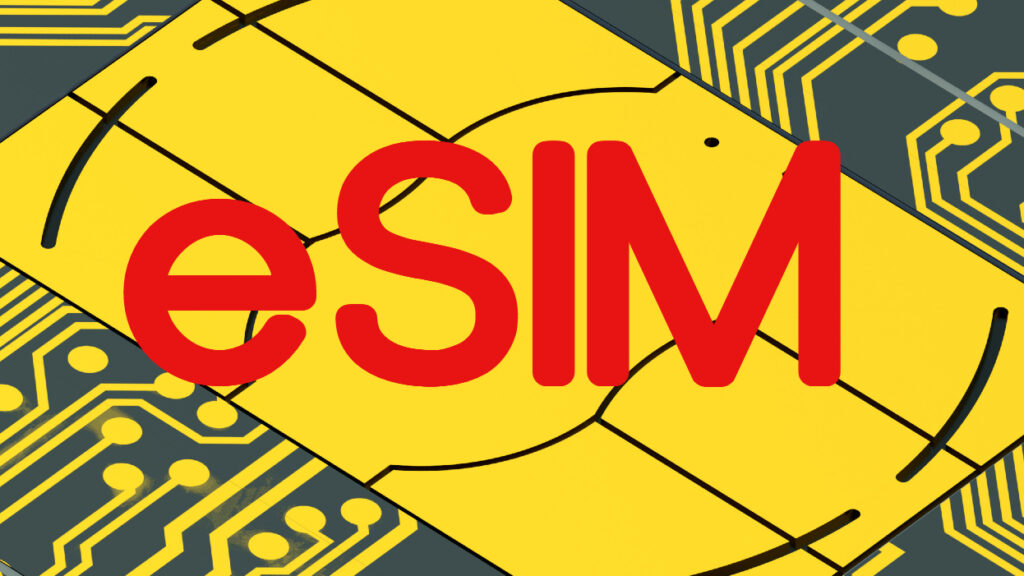The installed base of IoT devices using embedded SIM (SIM) technology will top 3.6 billion by 2030, up from just over one billion in 2023, reckons analyst house Omdia. Growth, of 260 percent in the period, will be spurred by advances in eSIM technology, notably with the latest GSMA SGP.31/32 specifications, but also with more general growth in cellular IoT with the sale of 5G-based RedCap and “Massive IoT” modules, said Omdia, plus with the rise of LTE-based Cat-1bis units.
Incoming eSIM technology embeds a cellular-based subscriber identity module (SIM) into a device circuit board, and combines it with remote provisioning software. The humble SIM has evolved and mutated over the years, from a credit-card sized first-gen form factor (1FF) in the early 1990s, through mini-SIMs (2FF) in the mid-1990s, micro-SIMs (3FF) in the early 2000s, and nano-SIMs (4FF) in the 2010s. In parallel, a second family of M2M/IoT SIMs has emerged; eSIM uses the second-gen machine-form (MFF2), which can be soldered into an IoT device.
This MFF2 SIM is the first component in an eSIM solution. The other component, the universal integrated circuit card (UICC), is based in software and embedded in the SIM (as the eUICC) to enable dynamic control of the SIM’s carrier functions, plus some security aspects. A traditional UICC contains a single mobile network operator (MNO) profile, which includes the information the MNO needs to enable connectivity; an eUICC can host multiple profiles, and so does not need to be changed, as part of a full SIM swap, in order to change operators.
The new GSMA SGP.31/32 standard sets out the architecture and requirements (SGP.31) and the technical specification (SGP.32) for remote provisioning of carrier airtime on eSIM/eUICC based devices. It introduces a new component, the eIM (eSIM IoT Remote Manager), as a standardised eSIM provisioning tool to facilitate the deployment and management of eSIM-enabled IoT devices at a large scale. Omdia notes SGP.31/32-level eSIMs, providing easier network switching and device management, are “primed for mass adoption” in enterprise IoT.
It writes: “eSIM technology has been widely adopted in consumer markets, particularly with smartphones and smartwatches. Constraints on power, computing, and end user intervention have stymied the ability of IoT enterprises to take full advantage of this technology… These hurdles are beginning to be reduced as solutions come to market. The market is being driven not only by improvements in eSIM technology, but also by other key trends driving IoT adoption, such as 5G RedCap, 5G Massive IoT, and 4G LTE Cat-1bis modules, as well as enterprise demand.”
It might be noted ‘5G Massive IoT’ is a curious classification, which refers in official 3GPP documentation to LTE-based IoT technologies, such as NB-IoT and LTE-M, on 5G networks. Omdia said it surveyed over 700 global IoT enterprises to conclude that 90 percent plan to adopt eSIM/iSIM technology over the next two years. It writes: “Aside from the increased security, enterprises prioritise the benefits of eSIMs to create more complete/reliable networks, manage costs, and… comply with local regulations.” A report is available here.
John Canali, principal analyst for IoT at Omdia, said: “eSIM technology has long been seen as an important form factor for IoT devices, but now we are seeing the technology improve in ways that help enterprises provision over-the-air in resource-constrained IoT devices. This will create greater competition between communication service providers (CSPs), as IoT enterprises are less subjected to vendor lock-in by the CSPs and are better positioned to renegotiate connectivity tariffs.”
Andrew Brown, practice lead for IoT at Omdia, said: ”The new GSMA SGP.32 eSIM specification was much needed and has been specifically designed for IoT. It offers significant advantages in terms of cost, flexibility and longevity for hardware OEMs, finally beginning to bridge the gap between traditional consumer device provisioning and more traditional IoT devices. This will help to accelerate adoption in key industries, not only those that have long desired eSIM standardization, such as automotive, but in a multitude of others also.”
